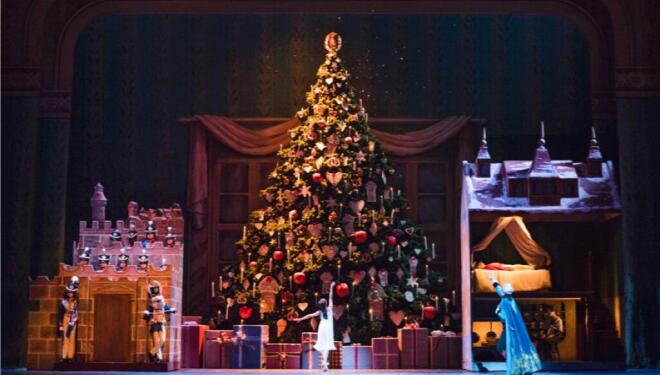
The Cellist ★★★★★
This revival of two award-winning recent commissions elicits contrasting emotions. Anemoi, by The Royal Ballet first soloist and up-and-coming choreographer Valentino Zucchetti, offers undiluted pleasure. The moment it ended, I wanted to watch it all over again.
Created mid-pandemic for 16 dancers from the lower ranks of the company, Anemoi, named after the ancient Greek gods of the wind, uses the language of classic ballet, but makes it modern, fresh and exhilarating. Importantly for a company of record, Anemoi represents unbroken continuity with its history, even while opening up new horizons.
Equally significant is that Anemoi was created specifically to give younger dancers their moment in the spotlight; and the energy and artistry both casts in the current run put into their performances bears witness to how much they enjoyed the opportunity.
Responding to music by Rachmaninov, Anemoi is a continuum of expansive movement depicting the wind's restlessness, with ever-changing groupings – you never see the same formation twice – movement in unison or canon, each individually costumed dancer showing off what he or she can do, without ever falling into circus tricks. Each turn, jump, lift, falls into a rigorously organised whole, cleverly devised to look like a whirlwind.
Anemoi has two lead couples, their exacting pas de deux so elegant and fluid they belie the fiendish difficulty of the choreography. It's a very classy work.
By contrast, Cathy Marston’s The Cellist generates mixed feelings of frustration and puzzlement at the choreographer’s choices, alongside emotional involvement in its better sequences.

Lauren Cuthbertson and Marcelino Sambé in The Cellist © 2020 ROH. Photo: Bill Cooper
Intended as a biopic of the great British cellist Jacqueline du Pré (1945–1987), whose glittering career was cruelly cut short by multiple sclerosis, the ballet has three central characters: The Cellist, The Conductor (du Pré’s husband Daniel Barenboim) and The Instrument performed by a male dancer; and its most engaging moments are those involving any combination of the three.
The problem is that Cathy Marston is fond of minutiae. She crowds the stage with subsidiary characters – an overprotective mother forever wrapping du Pré in cardigans, a series of music teachers (blink and you miss them), a numerous ensemble that acts as prop movers and Greek chorus – and like white noise they dilute, and distract from, the main action. You wish they’d go away.
Nevertheless, The Cellist, danced to a specially commissioned score by Philip Feeney, has meaty roles for its three main characters, danced by two casts in the current run.The Cellist was created on principal Lauren Cuthbertson. Her du Pré’s is vital, sensual, living in a delirium of heightened emotion. It’s an exalted performance, to my mind one of her best ever.
Mayara Magri debuted in the role in the second cast, and her Cellist, though quite different, was equally plausible. Hers was a gentler, younger du Pré, dazzled by music and love, her loss of control over her own body deeply moving. She was well supported by Calvin Richardson as The Instrument and Lukas B Brændsrød as The Conductor, roles created respectively on the deeply expressive Marcelino Sambé and Matthew Ball, who reprise them in the first cast.
READ OUR INTERVIEW WITH MAYARA MAGRI HERE.
| What | The Royal Ballet, Anemoi/The Cellist review |
| Where | Royal Opera House, Bow Street, Covent Garden, London, WC2E 9DD | MAP |
| Nearest tube | Covent Garden (underground) |
| When |
20 Oct 23 – 02 Nov 23, 19:30 Dur.: 2 hours inc one interval |
| Price | £4-£110 |
| Website | Click here to book |



